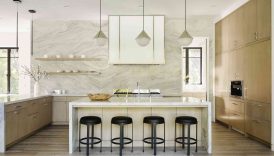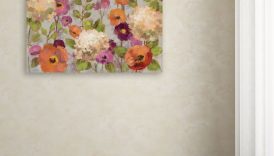10 Expert Tips for Interior Designers to Elevate Their Projects

IDea Generation Techniques for Interior Designers
Mood Boards and Visual Collages
Mood boards are an essential tool for interior designers, functioning as a visual representation of ideas and inspiration. They help streamline the creative process by consolidating different materials, colors, and design elements in one cohesive display. With a mood board, designers can effectively communicate their vision to clients and ensure everyone aligns with the intended aesthetic. Creating a mood board can be a fun and engaging process. Here’s how to do it effectively:
- 10 Expert Tips for Interior Designers to Elevate Their Projects
- IDea Generation Techniques for Interior Designers
- Mood Boards and Visual Collages
- Drawing Inspiration from Nature
- Maximizing Space and Functionality
- Strategic Furniture Placement
- Multi-functional Design Solutions
- Color Theory and Palettes in Interior Design
- Creating Harmonious Color Schemes
- Using Accent Colors for Impact
- Lighting Techniques to Enhance Ambiance
- Layering Light Sources
- Incorporating Natural Light
- Incorporating Sustainable and Eco-Friendly Practices
- Choosing Sustainable Materials
- Energy-Efficient Lighting Solutions
- Collect Inspiration: Gather images from magazines, websites, and social media platforms like Pinterest. Look for textures, color palettes, furniture styles, and architectural details that resonate with your concept.
- Physical or Digital: Decide whether to create a physical board using cutouts or opt for digital tools like Canva or Adobe Spark, which offer templates and easy drag-and-drop functionality.
- Organize and Edit: Arrange your collected images into a harmonious layout. Consider how the colors and textures complement each other and eliminate anything that doesn’t fit the vision.
For example, while working on a cozy, rustic cabin design, a designer might include warm wood tones, soft textiles, and earthy color inspirations to communicate the desired atmosphere.
Drawing Inspiration from Nature
Nature is one of the richest sources of design inspiration. By observing the natural world, interior designers can derive organic shapes, colors, and textures that enhance their projects. Here are a few tips for leveraging nature in design:
- Color Palettes: Take cues from the natural environment. The hues of a sunset can inspire a calming color scheme, while the vibrant shades of a flower garden can lead to a more lively and energetic palette.
- Textures and Patterns: Look to materials found in nature, such as stone, wood, and textiles reminiscent of natural fibers. These can bring warmth and authenticity to a space.
- Biophilic Design: Integrate elements that reflect nature, like indoor plants, water features, or natural light sources. This approach not only enhances aesthetic appeal but also promotes health and wellbeing.
Personal experience often illustrates this concept perfectly. Once, while sitting in a serene park, a designer noticed how the light filtered through the trees, creating dappled shadows on the ground. This scene inspired a unique ceiling design incorporating similar patterns, ultimately enriching the room’s ambiance. Incorporating mood boards and nature-inspired elements into the design process not only stimulates creativity but also creates spaces that resonate with both the designer and the clients, making every project a personalized and cherished experience.
Maximizing Space and Functionality
Strategic Furniture Placement
Maximizing space and functionality is essential in interior design, particularly in smaller areas where every square foot counts. One of the most effective strategies is strategic furniture placement. This involves arranging furniture in a way that facilitates movement and interaction while also making the most of the available space. Here are some key tips for effective furniture placement:
- Create Zones: Divide the room into functional areas, such as a reading nook or conversation space. Use furniture like rugs or sectionals to define these zones without building physical barriers.
- Choose the Right Size: Scale is critical. A large sofa in a small room can overwhelm the space. Opt for smaller pieces that match the room’s proportions to ensure a more inviting atmosphere.
- Maintain Flow: Arrange furniture to allow for smooth transitions between zones. Ensure there’s enough space for traffic flow; ideally, leave at least 2-3 feet of walking space.
For instance, a designer recently worked on a compact studio apartment. By placing the sofa against the wall and utilizing nesting tables, they created an open layout that felt spacious and functional, even with limited square footage.
Multi-functional Design Solutions
In today’s fast-paced world, multi-functional design solutions are more relevant than ever. These solutions enable designers to create spaces that serve multiple purposes without sacrificing style or comfort. Consider these creative ideas for multi-functional design:
- Convertible Furniture: Pieces like sofa beds, extendable dining tables, and ottomans that open for storage can dramatically enhance functionality.
- Built-in Storage: Incorporating shelving units or cabinets that blend seamlessly into the walls can maximize vertical space while minimizing clutter.
- Room Dividers: Use movable screens or bookshelves to separate spaces without sacrificing openness and light. This is particularly useful in studio apartments or large rooms.
A memorable example came from a recent project where a designer transformed a home office into a guest room. By integrating a murphy bed within custom cabinetry, they created a seamless solution that didn’t compromise the office’s functionality during work hours. These strategies not only enhance both the functionality and aesthetic appeal of a space but also cater to the diverse needs of modern living. Ultimately, maximizing space through thoughtful placement and multi-functional solutions leads to harmonious, livable environments that tell a story.
Color Theory and Palettes in Interior Design
Creating Harmonious Color Schemes
Color plays a vital role in setting the mood and tone of a space, making it essential for interior designers to understand color theory to create harmonious color schemes. A well-designed palette can evoke feelings of tranquility, energy, and even creativity, influencing how occupants interact with their environment. Here’s how to establish a balanced color scheme effectively:
- Choose a Dominant Color: This will serve as the foundation for your design. For instance, soft blues or greens can create a calming effect, making them ideal for bedrooms.
- Select Complementary Colors: Use the color wheel to find colors that complement each other. For example, pairing warm colors like oranges with cooler tones like teal can create a vibrant yet balanced look.
- Use Neutrals Wisely: Incorporate neutral shades (whites, grays, beiges) to serve as a backdrop. This approach allows brighter colors to stand out while providing a cohesive flow throughout the space.
A designer once shared a project where they transformed a living room using a palette of warm neutrals combined with earthy greens. This combination not only unified the space but also brought the feeling of nature indoors, creating a serene atmosphere.
Using Accent Colors for Impact
While a harmonious color scheme sets the stage, accent colors provide that crucial punch of personality and flair. Accents can introduce vibrancy, drama, or whimsy to a room without dominating the design. Here are some practical tips for incorporating accent colors:
- Strategic Placement: Use accents on items that catch the eye, such as throw pillows, artwork, or area rugs. This draws attention to specific areas while tying the overall theme together.
- Limit the Palette: When selecting accent colors, choose one or two that contrast with the dominant colors. For example, in a navy blue room, a few bright yellow accents can add energy and warmth without overwhelming the design.
- Consider Seasonal Changes: Accent colors can easily be switched out to refresh a space. Seasonal decor, like warm terracotta hues in the fall or bright pastels in spring, allows for a dynamic living environment.
For instance, a recent redesign of a dining area featured a muted palette of grays and whites, with a striking cobalt blue accent wall. The wall became the centerpiece of the room, inviting conversation and admiration. By skillfully creating harmonious color schemes and strategically using accent colors, interior designers can craft spaces that are not only visually stunning but also emotionally resonant, elevating the overall experience of the inhabitants.
Lighting Techniques to Enhance Ambiance
Layering Light Sources
Lighting can transform a space from ordinary to extraordinary, and one of the most effective techniques in interior design is layering light sources. Layering involves combining different types of lighting—ambient, task, and accent—to create a well-balanced and inviting atmosphere. Here’s how to achieve the perfect light layering:
- Ambient Lighting: This is the general illumination of a room, often provided by overhead fixtures. Choose soft, diffused light to create a warm and welcoming environment.
- Task Lighting: Task lighting is more focused and is used in areas where specific activities take place, like reading or cooking. Think desk lamps, under-cabinet lights in the kitchen, or adjustable sconces near seating areas.
- Accent Lighting: This type of lighting highlights specific features or objects in a room. Use spotlights, track lighting, or decorative lanterns to draw attention to artwork, architectural details, or attractive furniture pieces.
In a recent home renovation, a designer implemented a layered lighting scheme in a cozy reading nook. By incorporating a ceiling fixture for ambient light, a table lamp for task lighting, and a small spotlight on a piece of artwork, they created a warm and versatile atmosphere perfect for relaxing or entertaining.
Incorporating Natural Light
While artificial lighting is essential, the benefits of natural light cannot be overstated. It not only enhances the aesthetic appeal of a space but also contributes to physical and mental well-being. Here are some effective strategies for maximizing natural light:
- Select the Right Window Treatments: Opt for sheer curtains or blinds that can be adjusted to filter sunlight rather than block it. This allows for a soft glow while still providing privacy.
- Consider Reflective Surfaces: Incorporating mirrors or glossy finishes can help bounce natural light further into the room, making the space feel larger and brighter.
- Strategic Room Layout: Position furniture away from windows to ensure light flows throughout the space. Additionally, keep glass doors or large windows unobstructed for an unobstructed view and maximum light exposure.
In one project, a designer took advantage of large windows in a sunroom, using soft, sheer drapes to invite natural light while protecting delicate furnishings from harsh rays. The result was a bright, airy space that felt connected to the outdoors. By mastering layering light sources and incorporating natural light, designers can greatly enhance the ambiance of a room, creating spaces that not only look beautiful but also foster comfort and well-being. This thoughtful approach to lighting brings a room to life, making it a truly enjoyable place to spend time.
Incorporating Sustainable and Eco-Friendly Practices
Choosing Sustainable Materials
Sustainability is rapidly becoming a cornerstone of interior design, and one of the most impactful ways designers can adopt eco-friendly practices is by choosing sustainable materials. By selecting products that are sourced responsibly, you can significantly reduce your project’s environmental footprint and create spaces that resonate with conscientious living. Here are some guiding principles for choosing sustainable materials:
- Look for Certifications: Seek out products with certifications like FSC (Forest Stewardship Council) for wood and Greenguard for indoor air quality. These labels ensure the materials meet rigorous environmental standards.
- Opt for Reclaimed or Recycled Materials: Using reclaimed wood, recycled metals, or repurposed textiles breathes new life into materials that would otherwise end up as waste. For example, a reclaimed wood table not only adds character but also tells a story of sustainability.
- Consider Local Sourcing: Materials that are produced locally have a lower carbon footprint compared to imported products. This also supports local economies and can add a unique touch to your design.
In one memorable project, a designer furnished a cozy cabin using reclaimed barn wood for flooring and furniture. The warm tones and history behind each piece added a unique character to the space while reducing environmental impact.
Energy-Efficient Lighting Solutions
Integrating energy-efficient lighting solutions is another key aspect of sustainable interior design. By adopting these innovative practices, designers can significantly reduce energy consumption, lower utility bills, and enhance the overall ambiance of spaces. Here’s how to incorporate energy-efficient lighting:
- LED Lighting: Transitioning to LED bulbs is one of the most effective changes. They consume up to 80% less energy than traditional incandescent bulbs and have a much longer lifespan, resulting in both cost savings and an eco-friendly footprint.
- Smart Lighting Controls: Utilizing smart switches, dimmers, and timers can optimize energy use by allowing homeowners to control lighting levels and schedules. For instance, setting up dimmers can create a cozy atmosphere while also using less energy.
- Natural Light Optimization: As discussed earlier, maximizing natural light not only reduces reliance on artificial lighting but also creates a healthier living environment. Designers can incorporate features like skylights or larger windows to enhance daytime illumination.
A designer once recounted a project where they retrofitted an old office into a modern space by replacing all lighting with LEDs and installing motion sensors. It not only transformed the ambiance but also reduced energy costs by over 40%. By thoughtfully choosing sustainable materials and implementing energy-efficient lighting solutions, interior designers can play a significant role in fostering an eco-friendly future. These practices not only benefit the environment but also create beautiful, functional spaces that their occupants can enjoy for years to come.





